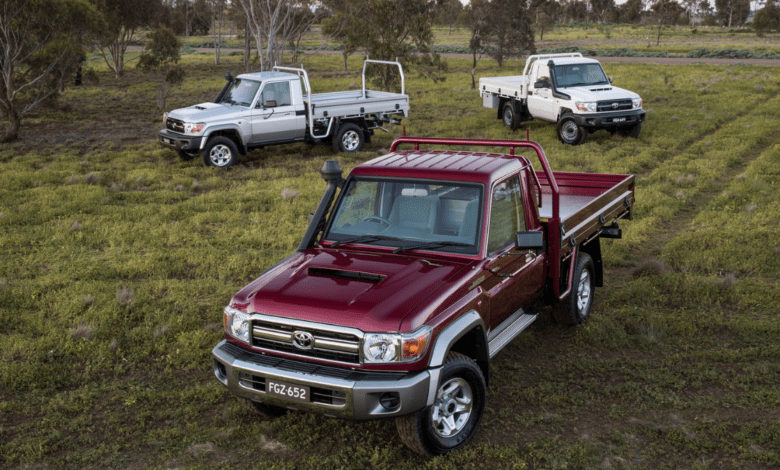
The Toyota LandCruiser 70 Series lineup has been revised for 2023 and beyond, with some significant enhancements to safety technologies and a few tweaks that make this workhorse range even more desirable than before.
As if it needed to, Toyota closed the order books for this car since it is in great demand that the company cannot keep up. Delivery timeframes are said to have ballooned to four years. Yikes.
So, why should it be updated? What has changed? Along with eventually receiving automated emergency braking (AEB) with pedestrian and cyclist recognition, the brand increased the gross vehicle mass (GVM) throughout the model range to 3510kg.
That may appear to be a boon for buyers. Still, it’s also a smart move by Toyota because the increase in GVM beyond 3500kg means the 70 Series line is now considered a light truck (medium goods vehicle), and if Toyota hadn’t made that GWM upgrade, the car would have been axed due to Australian Design Rules (ADR) regarding side impact protection.
Prices for all 70 Series cars increased by $1600, but Toyota Australia recognized it couldn’t afford to look this cash cow in the mouth, so it spent to guarantee it remained a part of its company—enough with the farm animals.
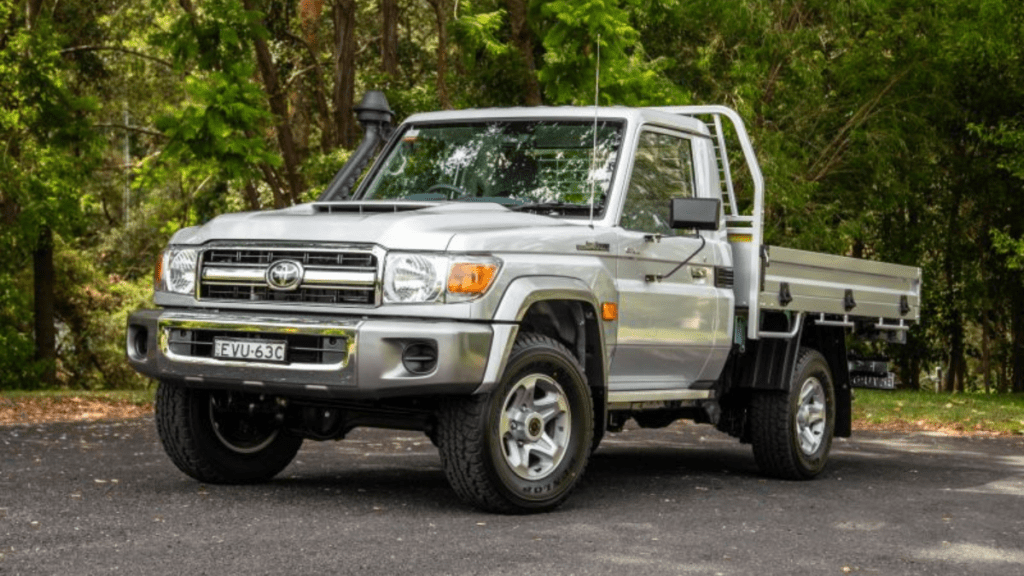
What is the price of the Toyota LandCruiser 70?
It’s reasonable to say that’s too much. This high-priced workhorse ute lacks the modern conveniences, comfort, and luxury features that come standard on a dual-cab pick-up like the Ford Ranger. One may argue that you’re paying for a reputation, that this is a legendary vehicle with excellent credentials for lifespan, durability, toughness, and capacity. It is, indeed. Nonetheless, it is still not inexpensive.
This is also a moot argument since the Toyota LandCruiser 70 Series range will not be available for order until the first half of 2023. New orders for it have been halted, and there are rumours of waiting periods of more than 12, or even 18, months. As a result, the MSRP pricing (before on-road fees) shown below is just indicative at the time of publishing.
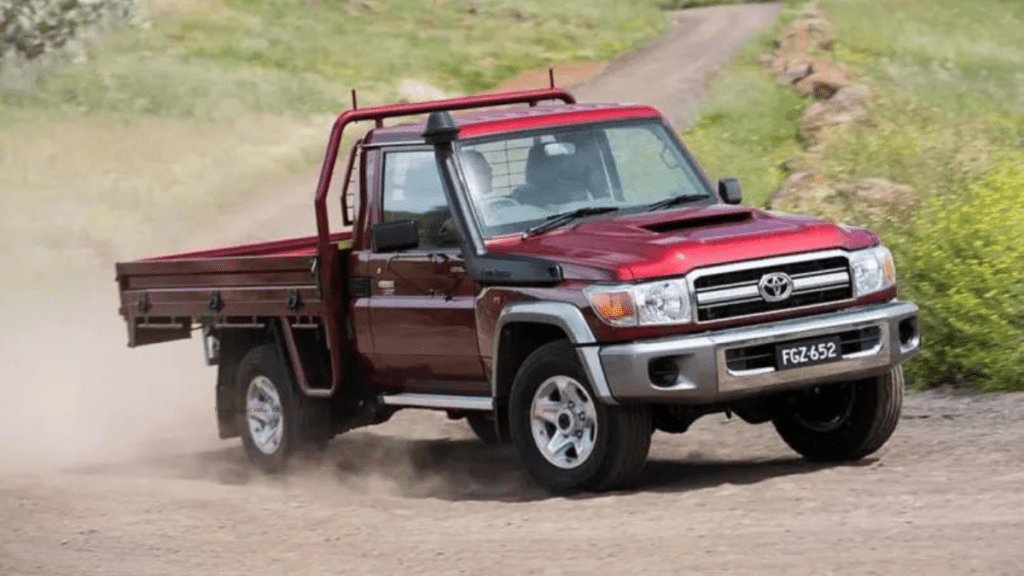
Pricing for the Toyota LandCruiser 70 in 2023:
Single-Cab (LC79)
- WorkMate – $70,550
- GX – $72,550
- GX w/ Diff Locks – $74,050
- GXL – $74,650
Double-Cab (LC79)
- WorkMate – $73,100
- WorkMate w/ Diff Locks – $74,600
- GXL – $77,200
Troop Carrier (LC78)
- WorkMate – $72,950
- GXL – $76,150
Wagon (LC76)
- WorkMate – $69,000
- GXL – $73,100
The 2023 Toyota LandCruiser LC79 GXL Single-Cab Cab-Chassis tested in this review has a list price of $74,650 plus on-road fees – and then there’s the optional silver paint ($675).
If you’re wondering, the tray for cab-chassis versions is available separately, so you’ll need to include it in your budget. Toyota offers trays in single- and double-cab configurations, as well as general-purpose alloy and heavy-duty alloy, general-purpose steel, heavy-duty steel, and body-colour-matched heavy-duty steel.
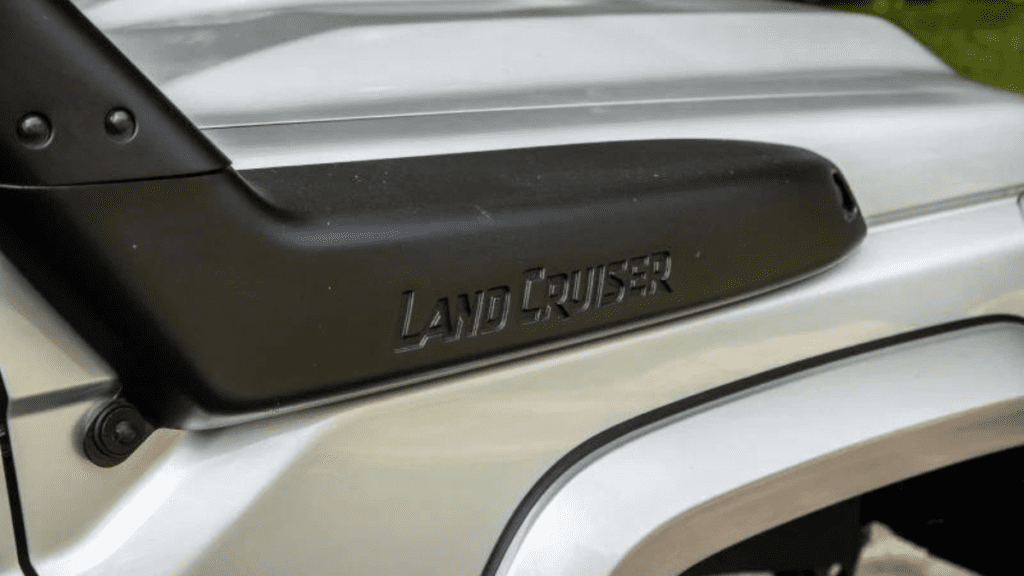
Even a $75,000 HiLux (or a top-spec D-Max or BT-50 with any spare cash) makes the 70 Series seem woefully inadequate. It’s only natural that the GXL features a blue interior accent with cloth upholstery (as opposed to the vinyl fitted to WorkMate and GX grades). I wouldn’t say I like the seat trim, and if I were to purchase a 70 like this, I’d acquire a pair of tailored seat coverings.
The floor is carpeted (rather than vinyl), and the plastics are all very durable. The materials are simple, but that’s precisely what this item is about.
There are several pleasant details, such as the cup holder, dual USB charging connections near the shifter, and a covered centre storage bin. Most people put their belongings beneath the seats, and little bottle holders are in the skinny doors.
We’ll go through the typical features for this grade below, but keep in mind that although costs are rising across the board, the range is more equipped with safety tech than ever. There’s more on it below as well.
What’s the inside of the Toyota LandCruiser 70 like?
As I previously said, if you spend $75K or more on a dual-cab Ranger, you’d feel like you received a lot of pleasure for your money. The controls are strict and never to be tampered with. The air conditioning system, now standard after being optional until recently, is excellent, and the fan cools the interior quickly.
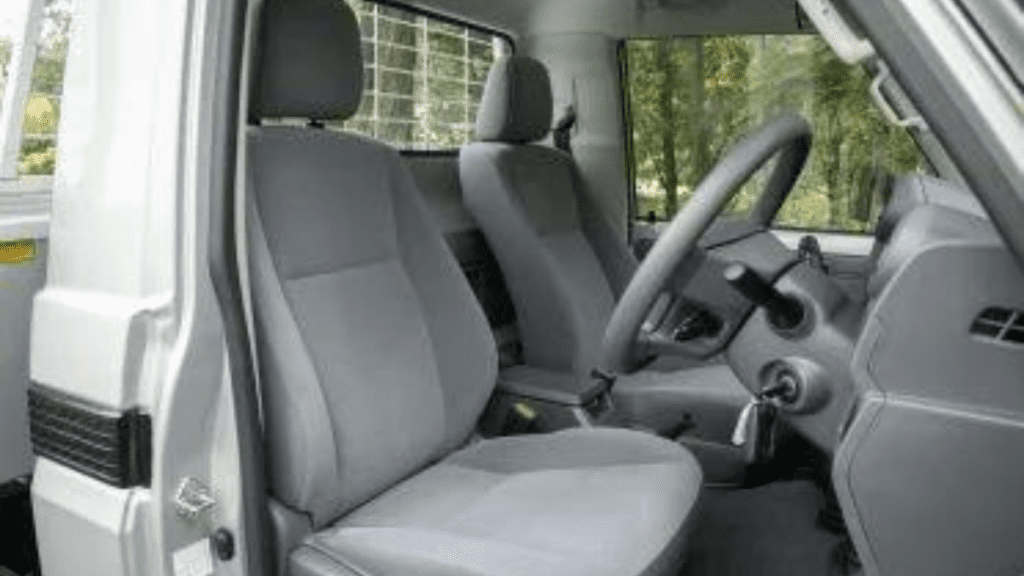
There’s a 6.0-inch touchscreen media system with sat nav on all grades these days but don’t expect to put your phone into the USB connector on the screen and have Apple CarPlay or Android Auto launch. Neither is available in the 70 Series. There is a CD player, Bluetooth phone and audio connection, and an AM/FM radio in cab-chassis variants, but just two speakers for the stereo.
What’s behind the hood?
The 4.5-litre turbo-diesel V8 engine under the hood of the 70 Series is a significant part of the attraction since it’s your only choice for this kind of powerplant until you pay a lot more on a US truck.
Its engine is famed for its low-stress nature, and with just 151kW (3400rpm) and 430Nm (1200-3200rpm), it’s simple to understand why.
Its 4.5L V8 provides less power and torque than the LDV T60, which has a comparably small 2.0-litre four-cylinder turbo-diesel engine but delivers 160kW and 500Nm – I know which machine I’d stake my life on surviving longer…
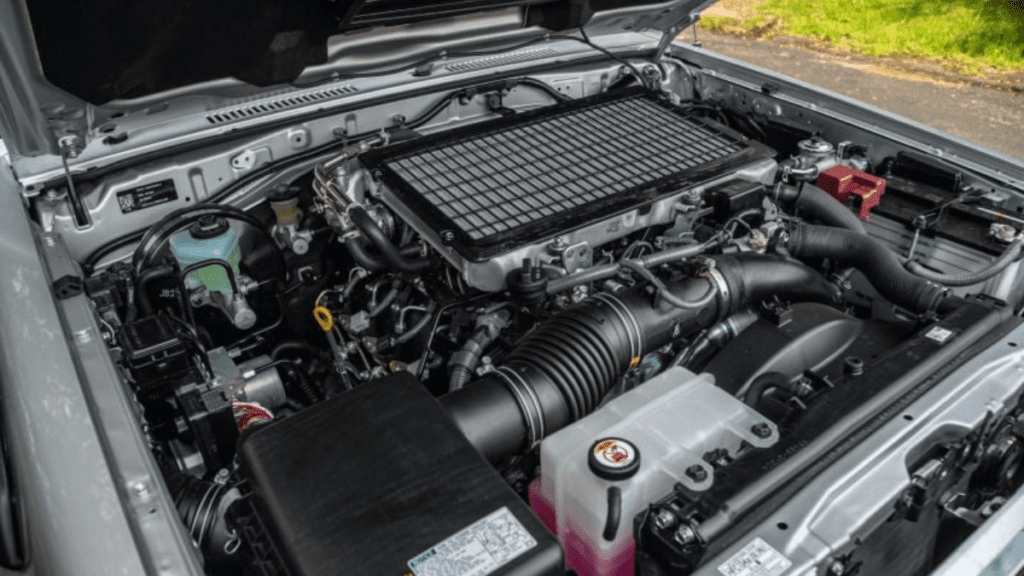
The LandCruiser 70 lineup is currently limited to a five-speed manual gearbox. It has four-wheel drive and a second shifter to choose between 2H, 4H, and 4L modes. Front and rear differential locks are also standard on the GXL.
Towing capacity is 750kg for unbraked trailers and 3500kg for braked trailers. The 6.6-litre turbo-diesel V8 in the GMSV Chevy Silverado delivers 332kW and 1234Nm. It is not a mistake. It can also tow 4.5 tonnes.
What is the driving style of the Toyota LandCruiser 70?
It’s not designed for city driving or responsibilities, so don’t expect it to perform well in such situations.
My testing consisted mainly of this kind of driving, with a touch of higher speed unsealed road thrown in for good measure, and it seemed more at ease in the wilderness than in the Big W parking lot.
The V8 is a significant plus for the driving experience. It’s so laid-back yet grunty that it allows easy progress, particularly without anything in the tray.
For background, back in the CarAdvice days, I had a long-term 70 Series, and I used to fill the tray with more than a tonne of firewood and four-wheel drive out of the spot where I chainsawed those trees with my father-in-law.

And, to be honest, I didn’t believe I needed to go down that road again. This vehicle goes farther than you’d think with four-wheel drive, and with the diffs locked, tire pressures down, and low-range selected, it’s almost unstoppable – even with a load on board.
With an increased gross vehicle mass (GVM) of 3510kg across the board, this “light truck” qualifies for the title. For example, the GXL Single-Cab Cab-Chassis has a payload capacity of 1315kg.
The five-speed manual still seems a gear short at highway speeds, and although Toyota is unlikely to offer a new six-speed gearbox, much alone an automated transmission option, it does the job. The throw is lengthy, the movement is jerky, and the clutch is hefty. This is the first time I’m hearing about it.
The steering of the 70 Series is often characterized as ‘vague’ or ‘aloof,’ implying that you have no idea what will happen as you move the wheel. That’s a fair judgment, considering it has some straight-ahead play and is somewhat sluggish at low speeds. It’s predictable enough at higher rates on the open road, but don’t push it too hard.
The turning radius is the central issue. Cab-chassis versions have a 14.4m turning radius, which means that in addition to a lot of arms and work to move the thing around, you may need to perform a five- or seven-point turn when a three-pointer would generally suffice.
The ride was decent, given there was no weight on the rear axle for my testing, and from experience, I know it merely becomes squishier as you add kilograms, much like me. On the other hand, the quantity of noise incursion into the cabin reminded me that I was stepping back in time.
The following is a list of things to do in your spare time. Toyota, maybe a couple of more speakers would assist in diverting shoppers’ attention away from that?
What do you get?
You’ll be sorely disappointed if you’re expecting a detailed list of standard equipment.
Here’s an overview of what the 70 Series includes. There are no automatic headlights, wipers, or daytime running lights on any model, and all come with a real key and a separate remote central-locking fob.
Highlights of the LC70 Workmate:
- 16-inch steel rims
- Headlights with halogen bulbs
- 6.0-inch touchscreen display
- Navigation using satellite
- stereo system with two speakers (4-speaker for Wagon)
- three USB ports
- 12-volt power supply
- Seat trim in vinyl
- Vinyl floor moulding
- Snorkel
- Side steps made of steel (aluminium on Double-Cab, Wagon)
- Mud flaps in the front
- Front bumper in black
- Air-conditioning
- Mats for the floor
- Barn door in the back (Wagon and Troopy)
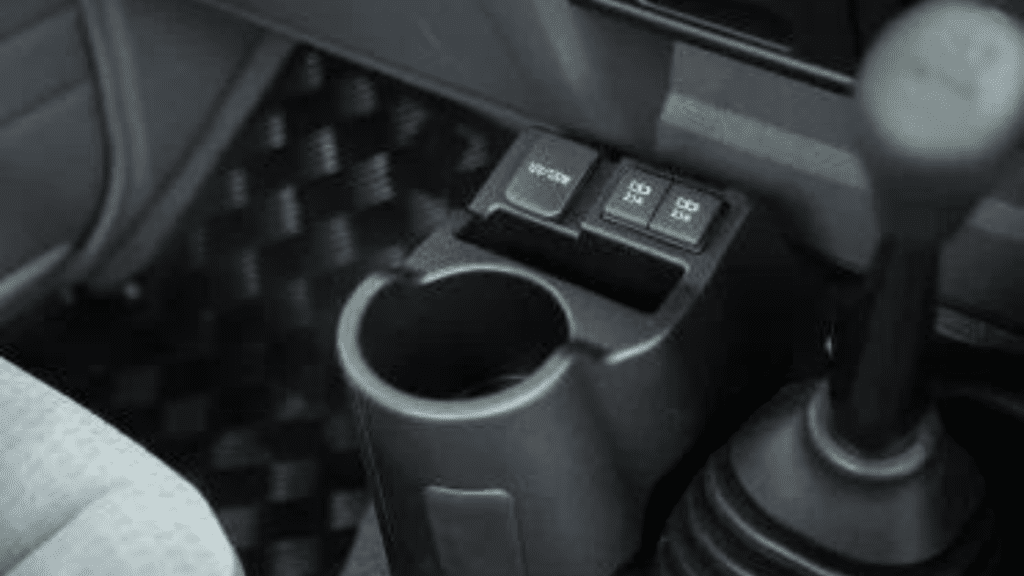
LC70 GX includes:
- 16-inch aluminium alloy wheels
- Flares on the fenders
The 4-speaker stereo LC70 GXL includes the following:
- Front bumper in chrome and paint
- The rear bumper is chrome and painted (Double-Cab, Troopy)
- Grille in Chrome
- Roof drip rails in chrome
- Seat trim in cloth
- Fabric door casing
- Flooring made of carpet
- Antenna de puissance
- Fog lights in front (N/A Single-Cab)
- stereo with four speakers (Troopy, Wagon)
- There’s more to it: if you read the safety section, you’ll see that only one body type receives the complete complement of crash protective gear.
Is the Toyota LandCruiser 70 a safe vehicle?
It is now safer than ever before. Yet the single-cab is still the safest choice. Let me explain. More sophisticated active safety technologies were introduced in the 2023 upgrade.
All LC70 models now include automated emergency braking (AEB) for automobile identification that works between 10-160km/h and pedestrian and daylight bicycle detection that operates between 10-80km/h.
It implies this is effectively the same forward collision avoidance technology used in the LandCruiser 300 Series, except for the maximum speed (AEB works up to 180km/h for the 300 Series, and I doubt a 70 will reach that speed).
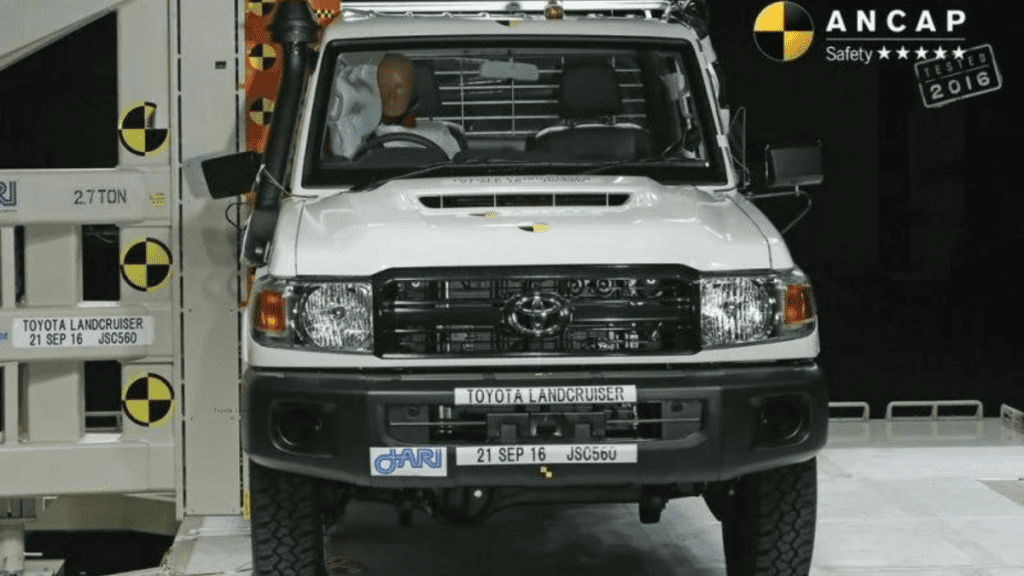
Nevertheless, no additional modern safety features like lane-keeping assistance, blind-spot monitoring (which is difficult to accomplish in a car that still lacks power mirrors), rear cross-traffic warning, or rear AEB.
How much does it cost to operate a Toyota LandCruiser 70?
Every LandCruiser 70 Series model, regardless of body type or variation, has an official mixed cycle fuel consumption figure of 10.7 litres per 100 kilometres.
You may be able to do so if you take it slow, don’t put anything in the tray, and spend most of your time between 50 and 80 km/h. Nonetheless, you will likely get a similar result to mine – 12.2L/100km. Again, nothing loaded nothing hauling, nothing off-roading.
But brace yourself when you want to fill it up since the 130-litre tank (180L for the Troopy) will be expensive. In principle, you might spend more than $300 from empty, not including the Troopy’s large tank! But, high expenses are likely to be a trend for this rig – it’s not cheap to acquire, nor is it reasonable to maintain; and the ownership element is hardly budget-friendly, either.
There’s a reason these powertrains are recognized for their dependability, with service necessary every six months or 10,000km and costing $425 for the first three years/60,000km. It also comes with a five-year/unlimited-kilometre warranty, but you can extend it to seven years provided you keep logbook maintenance.
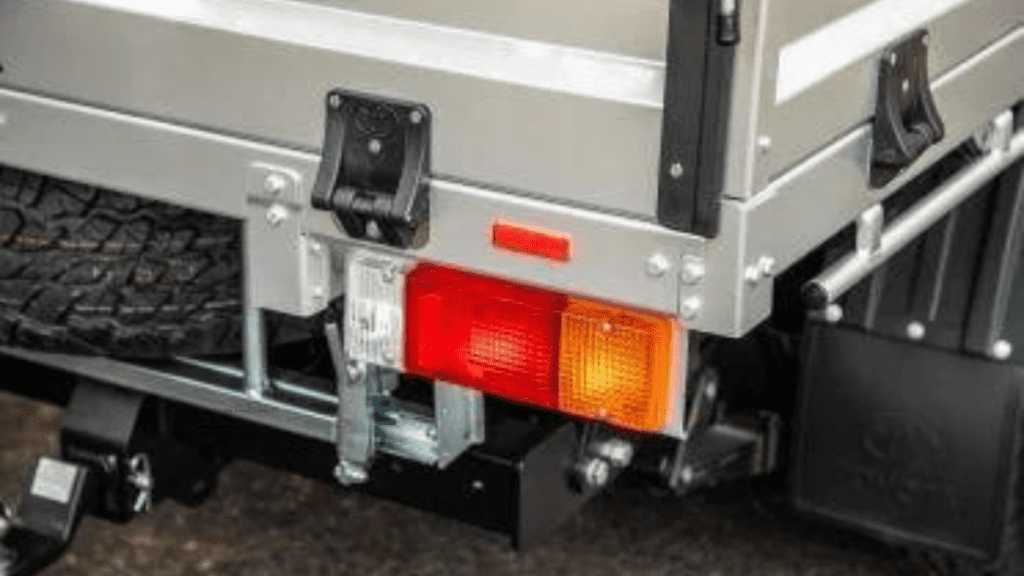
Roadside support is not included with any Toyota, so you’ll have to pay extra if the NRMA has someone near your farm or mining site.
Toyota LandCruiser 70 Review
It’s ancient, virtually rare to find, and will only fit select individuals in specific fields of employment. Yet it’s difficult not to be swayed by the allure of this massive equipment. Considering the incremental upgrades, Toyota continues to do so




